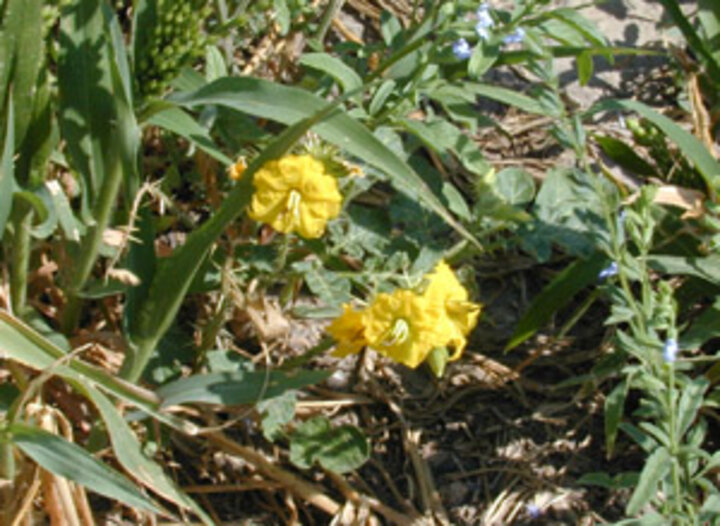June 27, 2008
Learn More . . . about proso millet in a new UNL Extension Publication, Producing and Marketing Proso Millet in the Great Plains. A story in this week's CropWatch describes the publication and provides information on ordering it.
|
Although proso millet is an important dryland crop in the Nebraska Panhandle and northeast Colorado, nationally it garners little attention. In fact, until recently, only four herbicides were labeled for use in proso millet: 2,4 D amine, Aim®, Clarity® and Peak®. Starane® Ultra was recently labeled for use in millet grown for grain, forage, or hay. It is currently a supplemental label and applicators will need to have this label in their possession when they apply Starane® Ultra to millet.
Starane® Ultra provides excellent control of kochia and good to excellent control of puncturevine and sunflower. Apply Starane® Ultra at a rate of 0.3 to 0.4 pint/acre, depending on the size of the susceptible weeds. To broaden the spectrum of weeds controlled, add 2,4-D amine (4L) at a rate of 1 pint/acre. Although Starane® Ultra may be applied to proso millet from the 2-leaf to the early boot stages, if 2,4-D amine is added, applications should be made from the 3- to 5-leaf stage.

|
|
| Pigweed (above) and buffalobur (right) in proso millet. | 
|
Not all 2,4-D products are labeled for use in proso millet. Be sure to check the label before using any 2,4-D product in proso millet. Most broadleaf weeds in proso millet can be economically controlled with 2,4-D. Apply 2,4-D amine (4L) at a rate of 1 pint/acre to proso millet in the 3- to 5-leaf stage. Crop injury may occur if 2,4-D is applied to plants outside the 3- to 5-leaf growth stage or to plants stressed by heat and drought. Injury will frequently result in poor root development and injured plants often will fall over and lay on the ground. Avoid 2,4-D herbicide application during hot, dry periods.
Using Clarity
Clarity® is the only dicamba product labeled for use in proso millet. Adding Clarity to 2,4-D amine will increase control of weeds such as kochia, especially triazine-resistant kochia, and wild buckwheat. Clarity® also may provide a week or two of residual weed control for some later emerging weeds. Add Clarity® at a rate of 4 ounces/acre to 3/4 pint of 2,4-D amine (4L) per acre. Like 2,4-D, Clarity® may injure proso millet if it is applied outside the 3- to 5-leaf growth stage or during periods of high temperatures or drought. The risk of crop injury is slightly greater with Clarity® than with 2,4-D alone. Clarity® should not be used when susceptible crops are within one-half mile of the application site.
Using Peak
Peak® provides some residual control of later emerging broadleaf weeds, but cropping flexibility is somewhat limited, for example, sunflower and garbanzo bean cannot be planted for 22 months following a Peak® application. Apply Peak® at a rate of 0.38 to 0.5 ounces/acre with 3/4 pint of 2,4-D amine (4L) per acre. Add a nonionic surfactant at a rate of 1 quart/100 gallons of spray solution.
Using Aim
Aim® herbicide can significantly improve the control of buffalobur when added as a tank mix partner to 2,4-D or 2,4-D + Clarity®. Adding Aim® to other labeled herbicides also can improve control of broadleaf weeds such as kochia and Russian thistle when the weeds are drought-stressed. Control of these weeds is not improved by adding Aim® when weeds are not exhibiting symptoms of drought stress.
Aim® herbicide should be applied at a rate of 1/2 ounce/acre. Add a nonionic surfactant at a rate of 1 quart/100 gallons of spray solution. Plant coverage is essential for good control because Aim® is not a translocated herbicide. Aim® should be tank-mixed with other herbicides labeled for use in proso millet to broaden the range of weeds controlled.
Drew J. Lyon
Extension Dryland Cropping Systems Specialist
